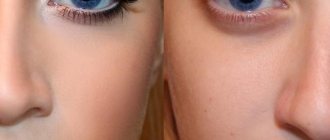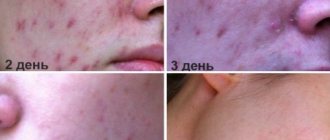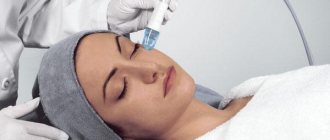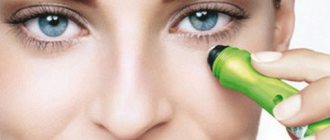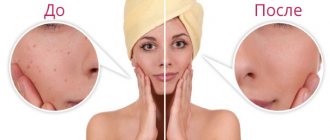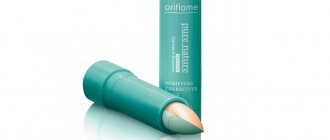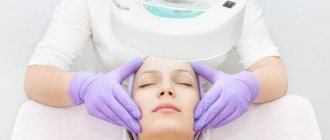At least once in her life, every girl wondered whether it was worth doing facial cleansing and how safe it was. Disputes about its necessity have divided both specialists and women into those who are categorically against and those who are in favor.
Deep cleansing is necessary for problematic skin prone to frequent rashes and clogged pores. In such a situation, scrubs and masks are often ineffective.
But professional cleansing is also stressful for the skin. That is why you don’t need to abuse it, try to do it every month. Such zeal is more likely to harm than relieve problems.
Indications for use
Proper skin care is the key to its health, youth and beauty. The standard is an even, smooth face with a uniform shade, without wrinkles, pigmentation and congestion spots, pimples, blackheads and other defects.
Many women strive for this. But at home it is not always possible to achieve the desired effect, especially for those with problematic epidermis. Scrubs, peels and other products clean only the outer layer of the skin.
Professional cleansing will help improve the condition of the dermis, which affects the deep layers of the skin and is useful because it works in several directions:
- regulates the separation of sebaceous secretions;
- eliminates oily shine;
- fights blackheads, acne, pimples, milia (a type of wen);
- lightens pigmentation;
- evens out skin tone;
- eliminates post-acne, scars, scars;
- smoothes wrinkles;
- eliminates dryness and flaking of the skin.
One of the few problems that cannot be dealt with using this method is the elimination of wen, which is a lipoma or atheroma (benign formation). To eliminate subcutaneous lumps, the doctor will recommend laser correction or another option. In all other cases, the doctor will prescribe a certain type of cleaning, taking into account the type of skin and the problems that need to be solved.
Typically, experts do not recommend cleaning the epidermis using salon methods until you reach adulthood. It’s even better to postpone the procedure until age 25–30, when dermal regeneration slows down. In adolescence, it is worth using a gentle alternative: masks, special cosmetics for young skin.
Attention! Many doctors are confident that early intervention in the natural processes of self-renewal of the skin is harmful and is fraught in the future with early wrinkles, dry epidermis and other troubles.
Ultrasonic cleaning
This method involves preliminary preparation of the facial skin. Disincrustants are applied to it, the components of which loosen the skin and acne. As such products, you can use gels or lotions based on fruit acids.
Ultrasonic cleaning
Cleaning is carried out with a special spatula-attachment that conducts an ultrasonic wave. During the procedure, intracellular massage is performed.
Positive aspects: during the procedure, the stratum corneum of the skin is well removed, blood flow is activated, which allows the skin to be better saturated with oxygen, metabolic reactions improve, and skin tone increases.
This procedure removes dead skin cells.
Negative points: low power of the emitted waves, which does not allow the comedones to be removed out. The maximum that can be achieved is gentle peeling.
Efficiency of the procedure
With the help of cleansing, it will be possible to effectively exfoliate the outer layer of the skin, which will be replaced by a new epidermis: soft, smooth, more elastic and fresh.
The procedure will help even out the skin tone and texture, restore pH, cleanse the dermis of impurities and toxins, improve metabolism, accelerate blood circulation, activate regeneration and launch the production of collagen and elastin.
Cleansing will be effective for women who want to slightly rejuvenate their skin and rid it of various defects: age spots, wrinkles, acne and post-acne, comedones, and reduce the appearance of pores.
The frequency and number of sessions depend on the specific method, the complexity of the tasks, the age of the patient, as well as her skin type. Those with dry and normal dermis can go to the salon once every 4-6 months. For girls with oily, combination, problem skin, the cosmetologist will offer more frequent visits - approximately every 1.5-2 months. Usually, to obtain a noticeable result, a course of 3 to 5–6 procedures is required.
Doctors advise cleaning during periods of no active sun: late autumn, winter, early spring. The renewed epidermis is exposed to ultraviolet radiation, which is expressed in pigmentation of the treated areas. At the same time, regardless of the time of the procedure, the skin should be protected with cosmetics with SPF.
Types of facial cleansing
Facial cleansing is not a very pleasant procedure, but at the same time it is necessary. It can be done in one of several ways; the choice is up to the client. So how to clean your face without harming it?
Chemical facial cleansing
Ultrasonic facial cleansing at home
This facial cleansing gives the most effective positive results. The procedure uses special substances that act on the epidermis, exfoliating it along with problem areas. There are three methods of chemical peeling:
- superficial - in this case, only the top layer of the epidermis peels off, and the procedure is completely painless;
- middle cleaning – exfoliation occurs to the basal layer;
- deep peeling involves removing all layers of the dermis.
Thanks to chemical action, the surface of the face is smoothed, age spots and scars are removed. The skin is renewed and rejuvenated.
Important! Peeling with acids must be carried out after the procedure, since the skin flakes and has an unpresentable appearance.
After chemical cleaning, the following recommendations should be followed:
- Avoid exposure to direct sunlight as the treated skin becomes very sensitive.
- The face must be treated with special creams to fill the skin surface with moisture and protect it from the external environment.
Hollywood facial
Hollywood facial cleansing is carried out using phytic acid. It is used for people of any age category. Suitable for both dry normal and oily or combination skin types. It can also be used for both women and men. Peeling is recommended for preventive, cosmetic and therapeutic purposes. Using this method, problems such as:
- wrinkles;
- black dots;
- dark spots;
- scarring;
- rash.
Hygienic facial cleansing
Hygienic facial cleansing is carried out in several stages. First, the surface is prepared using products that do not contain alcohol or alkali. After this, it needs to be steamed to open the pores. At the next stage, pimples and blackheads are removed. After this, the skin is disinfected and a cream is applied, which has a soothing effect.
Facial cleansing at home
Japanese facial cleansing
The Japanese cleansing system consists of two stages:
- Using hydrophilic oil, which can also be used to easily remove makeup. You need to apply it carefully, while massaging your facial skin. You need to wash off the oil by lightly wetting your fingers and continuing to make massage movements. Do this procedure until the oil completely disappears.
- After this, you need to use gel or soap. An important tool for washing is a sponge or mesh, onto which a drop of gel is applied and a thick foam is created. The product is applied to the face with massage movements and, using only the fingertips, is distributed over the entire surface. Wash off in the same way as oil.
The advantage of such cleaning is that the face is rejuvenated for several years.
Radio facial cleansing
To prepare for radiocleaning of the skin, lotions and gels are used that loosen it. The further process consists of running a special tool over the surface, from which an ultrasonic wave emanates. The procedure also provides massage at the cellular level, activating metabolism.
Preparation for the procedure
The doctor will tell you in advance about the need to prepare for facial cleansing. In some situations, specialists will order a medical examination because some procedures have health-related limitations. In addition, doctors warn patients about the following rules:
- For 14 days before the expected date, you cannot sunbathe on the beach or in the solarium.
- It is not advisable to choose a day for cleaning that falls during your menstrual period. The skin will take longer and more difficult to recover. During menstruation, blood clotting worsens and pain intensifies.
- In consultation with your doctor, you should stop taking antibiotics. In addition, during the treatment of infectious, viral illnesses (especially with high fever), cleaning is contraindicated.
- 2 weeks before the appointed date, you cannot peel or cleanse the skin in any other way.
- Particularly strict prohibitions apply to the next 3 days before the procedure. It is necessary to avoid using scrubs with abrasive particles, alcohol-containing cosmetics, as well as visiting saunas, steam baths, and swimming pools.
Attention! Recommendations may vary depending on the type of cleaning.
What affects the effectiveness of cleaning
The effect of exfoliation depends on a variety of factors.
When deciding when is the best time to cleanse your face, you should always take into account the characteristics of your own body. Assess the condition of your skin, listen to your body. This way you can understand when you can do facial cleansing and whether you need it at all. If exfoliation is necessary, consider what day of the week to make an appointment at the salon . This may sound a little strange, but the effectiveness of the procedure also depends on this.
Peeling is best done before the weekend. After all, the skin will recover for at least a day. And she needs to be given this time. By the beginning of the work week, she will have “rested” as much as possible, and you will be able to calmly go about your daily activities.
When deciding when to peel, you should also consider:
- season;
- monthly cycle.
Season
It is better to exfoliate your facial skin in the spring. In winter, it is negatively affected by wind and frost. This cleansing allows you to renew the skin, helps it “breathe,” and helps improve metabolic processes and blood circulation.
The most suitable time is March. At the beginning of spring, the sun does not shine very strongly yet, so the aggressive effect on the skin after peeling will be minimal.
If you want to opt for dry cleaning, it is better to schedule it for the winter season. Ultraviolet rays will have virtually no effect on the skin.
Many representatives of the fair sex are interested in whether it is possible to exfoliate in the summer. During this period, UV radiation is especially strong, and professional cleaning increases the vulnerability of the skin. Therefore, many experts do not recommend such peelings.
However, it is still permissible to carry them out at this time of year. True, you will have to take into account all the recommendations of the cosmetologist and take intensive care of your face.
Monthly cycle
Before menstruation, the skin becomes more sensitive. The level of its protection from negative external influences is significantly reduced. Experts advise exfoliating after your period or at least 5 days before it.
If this is not possible, carry it out, but taking into account some recommendations:
- Watch your blood pressure. If it is very high, hematomas may occur.
- If there is even minimal inflammation on the face during menstruation, exfoliation should be abandoned.
- It is not recommended to opt for chemical or mechanical types of cleaning. Vacuum peeling can be performed. Ultrasonic and laser effects are also allowed.
The best option for menstruation is to use a professional mask. It cleanses the face well and is very gentle.
Varieties
It is best to choose one or another procedure in tandem with a cosmetologist. A professional will assess the condition of the skin, existing problems and offer his own options. Types of cleansing differ in technology, indications for implementation, and degree of impact on the skin.
Mechanical
Most often, this method refers to a manual (manual) method of eliminating comedones and pimples - squeezing them out using a Vidal needle, strainer or Uno spoon.
Some experts differentiate the concepts: mechanical cleaning is called cleaning, which involves the use of sterile instruments, and classical manual cleaning is the one where the cosmetologist works exclusively with his hands.
Any of the methods is suitable for the owner of an oily, combination epidermis with clogged pores and abundantly covered with blackheads, pimples, and acne.
Mechanical methods of facial cleansing also include brushing. Another name is brossage. The keratinized particles of the dermis are exfoliated using special brushes.
Ultrasonic
One of the least painful and traumatic cleaning methods. The cosmetologist acts on the skin with a special device that emits ultrasonic waves. As a result, the face is cleansed of sebaceous plugs, blackheads, etc. An additional effect is micromassage, which stimulates blood circulation and metabolism. The ultrasound method is suitable for girls with normal skin type. It does not act aggressively, so it will not cope with serious problems.
Combined
Combines 2 types of cleaning at once: manual and ultrasonic. The first is used on problem areas with blackheads, milia and other defects. Ultrasound cleanses the entire surface of the face, refreshing the skin, improving its color and texture. The method is suitable for almost all women, with the exception of those whose skin is too dry.
Vacuum
It occurs using special equipment with a suction cup that creates a vacuum that pushes all impurities to the surface of the skin. Has a slight lifting effect. The procedure is suitable for owners of any type of skin, but it may not be effective for oily and problematic dermis.
Laser
It is considered the most expensive and quite aggressive cleaning. The laser beam evaporates (burns) problem areas, stimulating epidermal cells to renew. In place of the previous layer, a new, smoother, cleaner, even, uniform in color is formed. The technique is indicated for ridding the face of pigmentation, wrinkles, as well as increased greasiness, comedones and other problems characteristic of oily, problematic and combination types of dermis.
Atraumatic (chemical)
For this cleansing, the doctor uses special acid-based preparations that gently exfoliate the outer layer of the skin, cleanse it of impurities, and even out the tone and texture of the face.
The procedure is often called chemical peeling. The method is suitable for owners of any type of epidermis. The difference is in the composition of the product.
There is also another dry cleaning method that uses phytic acid. The method is called Hollywood and is recommended for women with dry, aging, oily skin. This option is also used for sensitive skin.
Attention! Sometimes vacuum and ultrasonic methods are considered atraumatic types of facial cleansing because of their delicate effect on the skin.
Galvanic
Other names are disincrustation, galvanotherapy or galvanophoresis. During the procedure, a special solution is applied to the skin. In order for the drug to better penetrate the epidermis, the cosmetologist applies weak electrical impulses to the patient’s face. This cleansing helps normalize the functioning of the sebaceous glands, dissolve impurities, and soften comedones. However, the method is not suitable for girls with dry, thin skin.
The average cost of different types of facial cleansing in Moscow is from 2,000 to 4,000 rubles. You can find it both cheaper and more expensive. The price of the laser method (depending on the complexity of the situation) reaches 12–16 thousand rubles, and this is not the limit either. How much any procedure costs depends on the location of the clinic, the qualifications of the doctor, the size of the treated area, etc.
How to care for your skin after cleansing?
Careful care will preserve the results of a specialist’s work for as long as possible. Well-groomed skin heals faster. It is recommended to adhere to the following rules:
- The next day after the procedure you are allowed to wash your face. Clean water heated to room temperature is suitable. You should not add milk, foam, soap or cleansing gel for 1-2 weeks.
- Mechanical impact on the facial skin is prohibited for a month, so hardware massages and peelings are not used.
- You can wipe your face for 7-10 days with soothing decoctions based on medicinal herbs (linden, chamomile).
- In case of severe redness and irritation, it is permissible to apply cold compresses from herbal infusions. Recommended plants: celandine, chamomile, St. John's wort or calendula.
- Nourishing moisturizing masks accelerate healing and relieve irritation. You can use them up to 2-3 times a week.
It is allowed to add a small amount of apple cider vinegar and lemon juice to herbal infusions. These components have an antiseptic effect.
Mechanical cleaning
After this manipulation, the rules of care cannot be ignored. The top layer of skin is inflamed due to damage, and this increases the risk of infection. It is worth noting that you can become infected through unsterile instruments in the salon. Therefore, you should carefully choose an institution and a specialist, preferably based on reviews from friends.
Facial care after mechanical cleansing involves maintaining hygiene. After coming home, you can wash your face with plain water. Redness and swelling are observed within 2-3 days. To make these signs go away faster, you need to wipe your face with a cotton pad soaked in chamomile infusion. Chamomile has an anti-inflammatory and antiseptic effect on the skin.
After a few days, increased secretion of subcutaneous sebum begins. This is a normal phenomenon, since the cosmetologist removes sebaceous plugs that interfere with the normal outflow of the sebaceous glands. Excess fat is removed with a cotton swab dipped in alcohol-free tonic.
If peeling occurs on the 3-4th day, there is no need to peel it off. Soon the skin condition will return to normal. If acne appears during the recovery period, it is permissible to apply Metrogyl gel to problem areas.
Ultrasonic cleaning
Facial care after ultrasonic cleaning is easier than after mechanical cleaning. Ultrasonic facial cleansing is less traumatic and easier to tolerate by the body. Typically, cosmetologists recommend applying a cream with dexapanthenol to the face for 2-3 days. For 1-2 weeks in sunny weather, before going outside, apply sunscreen.
For several weeks after the session, swimming pools, solariums and baths are not visited. You should not go to the beach or sunbathe for a long time. If deep cleansing was carried out in the presence of severe and deep acne, then to prevent scarring of the skin, the medications “Pantestin” or “Octenisept” are applied for a week. It is acceptable to use freshly prepared masks made from clay, raw potatoes, honey or oats. These components eliminate swelling and suppress inflammation.
Laser cleaning
Laser facial cleansing is especially popular, as it allows you to get rid of not only acne, but also smooth out fine wrinkles, improve skin turgor and eliminate sagging. The skin requires special care after the procedure, as the laser has a damaging effect.
During the recovery period, you cannot stay outside for a long time, as wind, frost, heat or rain negatively affect the regeneration of the skin. Dust that gets into open pores is harmful. To prevent pigmentation in sunny weather, apply sunscreen.
Laser cleaning is characterized by a short rehabilitation period, from 3 to 7 days. There are practically no side effects. Swelling of the face is possible in the first 2 days after the procedure. Moisturizing tonics and nourishing masks are used throughout the week.
It is worth noting that laser cleansing allows you to avoid some of the consequences that arise from other types of facial cleansing. Sometimes, after mechanical cleaning, scarring occurs that does not go away on its own. The laser procedure will not only cleanse the skin, but also eliminate mechanical defects on the face.
Vacuum cleaning
The method involves cleaning the face with a vacuum device. A tube is applied to the face to draw out impurities. A drainage effect is created. The duration of the procedure is half an hour. At the same time, the pain from the session is minimal. Vacuum cleaning resembles mechanical cleaning, but with minimal damage to the skin.
This is a simple cleaning option that does not penetrate deeply into the layers of the epidermis. Basically, superficial comedones, pimples and sebaceous plugs are removed. The rehabilitation period does not take much time, but the following recommendations should be followed:
- The skin is damaged after the procedure, which means it needs additional nutrition and hydration. Nourishing masks are applied to the face 2-3 times a week. Be sure to use moisturizer every day.
- Before going outside in sunny weather, apply sunscreen for 1-2 weeks after the procedure.
- For the first 3-4 days, a restorative cream with panthenol (Bepanten, Dexapanthenol) is used, which accelerates skin regeneration.
- The solarium, bathhouse and swimming pool are not visited during the month. This will protect the skin from infection and additional trauma.
Vacuum cleaning is useful for owners of any skin type, because acne and comedones are not the only indication for the procedure.
Dry cleaning
There are three types of dry cleaning: superficial, medium and deep.
With the superficial type, rehabilitation is quick. A few hours after the procedure, a healing agent is applied, preferably in aerosol form. The next day you can wash your face. It is acceptable to use alcohol-free lotions and tonics.
After 3-5 days it is allowed to apply a cream with a moisturizing effect. The transparent film that appears after the procedure should fall off on its own. Intensified sports activities, baths, beaches and swimming pools are prohibited for 2-3 weeks. Before going outside, apply cream with SPF protection.
With medium cleansing, the skin takes longer to recover. For 2-4 days after the session, the face should not be touched or processed. When the film appears, the face is treated with a wound-healing spray up to 10 times a day for two weeks. You can also use micellar water and apply moisturizer.
It is recommended to adhere to proper nutrition and exclude fatty, fried and starchy foods from the diet. Supplementing with omega-3 is helpful. Simple nutrition does not burden the body, which will allow the skin to recover faster.
After the peeling is completed, it is allowed to use caring cosmetics in full. The recovery period lasts 1 – 1.5 months.
Deep chemical cleansing is a difficult ordeal for the face. For the first 3 days it is forbidden to wash your face. The skin is treated with an antiseptic, and additional antibiotics and NSAIDs are taken.
A crust appears on day 3-4, and a wound healing spray is applied for 2 weeks. After 3 weeks you can switch to a moisturizer. Additionally, creams with SPF protection are used. For 2 months, the solarium, swimming pool and sauna are prohibited.
Stages of the procedure
Each cleaning is carried out according to its own scheme, using solutions, tools, devices, etc. On average, a visit to a cosmetologist lasts from 30 minutes to 1.5 hours (this includes preparation and the process itself). Depending on the specific technique and its nuances, in general terms the complete salon procedure goes something like this:
- Cleansing the face from impurities and makeup.
- Steaming the skin (for example, for a mechanical method) or treating the epidermis with a special composition (atraumatic, galvanic and other methods). If necessary, use local anesthesia.
- Elimination of defects manually or using devices (vacuum, laser, ultrasonic device, etc.). During the procedure, the patient may experience discomfort. Some women complain that they are in pain. The most common sensations are a burning sensation and tingling sensation. Many patients call ultrasound the least painful.
- The final stage: treating the skin with antiseptics, moisturizers or soothing agents.
The cleaning must be carried out by an experienced, qualified doctor who will do everything according to the protocol and pay due attention to the sterility of the process.
How to properly cleanse your face at home before bed
At home, you should definitely clean your face every day before going to bed, using foam pads. For your care to be beneficial, you can give preference to Avon, Faberlic, etc. cosmetics, but only those purchased in specialized stores. You also need to follow a number of simple rules:
- It is enough to allocate about 15 minutes for the procedure, which will help make your face fresher, younger and more beautiful.
- You should avoid using soap, as it cannot do a deep clean, and using it year after year significantly dries out the skin.
- Use scrubs to cleanse your skin 1-2 times a week. Preferably before bed. The scrub removes dead epidermal cells well.
- Wash only with warm water to activate the acceleration of metabolic processes.
- For drying, use a soft towel that easily absorbs excess moisture.
- Use a gentle product to remove makeup.
- Masks and night creams should be selected according to skin type, and if there are both dry and oily areas on the face, then a combined type is used.
- Go to bed only after the night cream has been completely absorbed.
Healing period
After the procedure, the face may remain red for some time. Painful sensations are possible: itching, a feeling of tightness of the skin, burning, etc. To relieve symptoms, it is important to use only those means that the doctor allows. Depending on the situation, doctors often recommend moisturizers, Panthenol or Bepanten, Chlorhexidine and other drugs.
By the way. The ultrasound procedure has the shortest recovery period. But it, like other methods, has contraindications.
The cosmetologist who performed the procedure will tell you in detail how to properly care for your facial skin after cleansing. Some recommendations differ depending on the method chosen. However, there are general rules:
- For the first 2–3 days, try not to touch your face with your hands or wash it with water. If the cosmetologist allows it, wipe your skin with milk or foam.
- Avoid using tonics, alcohol-based lotions, as well as scrubs and peels.
- After cleaning, you cannot visit the pool, sauna, or solarium for 2 weeks. Limit physical activity during this period.
- Remember: alcohol slows down skin regeneration and causes swelling.
- For the first few days after cleansing, protect your face from wind, frost, and heat.
- In the future, use a cream with sunscreen filters.
- As recommended by your doctor, use lotions and skin masks prepared at home.
How to get rid of subcutaneous wen on the face
Mechanical facial cleansing
Wen are white spots that are located around the eyes and mouth. Since this is the most sensitive part of the body, it is almost impossible to get rid of them. The appearance of wen indicates the presence of a disease and is treated with medication. Clients with such problems are recommended to undergo ultrasound diagnostics to determine the cause of the appearance of wen.
Result of skin cleansing
Important! If a person suffers from diseases of internal organs, diabetes mellitus and has blood problems, then he is strictly forbidden to visit a cosmetology salon.
It is recommended to cleanse the skin of wen only from a specialist, since eliminating such a problem at home can cause even more harm to the skin. The following methods are used to remove wen:
- Mechanical. In the process of such cleaning, the master opens lipomas and thus cleanses the pores of fat deposits. Most often, a special loop is used for this, which squeezes out the lard.
- Aspiration. It is used to clean not fully ripened wen. To do this, take a thin-diameter needle, which pierces the pimple membrane and sucks out its contents. The method is completely atraumatic and painless.
- Laser therapy. This method requires accurate diagnosis.
- Coagulation. Thanks to this method, you can get rid of wen forever. The procedure lasts five minutes, but the client feels pain.
- Chemical peeling. During the process, grease stains are dissolved and removed using chemicals.
Precautionary measures
If the procedure is carried out correctly with sterility, and if the patient follows all medical instructions, the skin heals quickly. Usually the process takes no longer than 7–10 days, and more often – even less.
It depends on the chosen method. If at some stage there was a violation of the technology or the client ignored the doctor’s recommendations, there is a risk of complications. It happens that rashes, hematomas, and swelling appear on the face, which do not go away for several days.
Sometimes side effects are the result of an allergic reaction or indicate individual intolerance to the components of the solution. To prevent the development of complications, it is important to exclude situations in which facial cleansing is contraindicated:
- oncology;
- pregnancy;
- lactation period;
- serious pathologies of internal organs;
- chronic diseases (diabetes, epilepsy, bronchial asthma, etc.);
- violation of the integrity of the skin - abrasions, wounds, cuts, burns;
- exacerbation of herpes or other viral infections;
- dermatological ailments;
- presence of implants, pacemaker, etc.
Attention! Ask your doctor for a list of contraindications for a specific procedure.
Indications and contraindications
Doctors recommend resorting to cleansing procedures in the following cases:
Cleaning is prohibited in the following cases:
- upper respiratory tract diseases;
- diseases of the cardiovascular system;
- diabetes mellitus, epilepsy;
- dermatological problems;
- period of pregnancy, breastfeeding;
- children under 16 years of age.
Only after consulting a doctor, decide to cleanse. Rash actions threaten complications.
Advantages and disadvantages
Advantages of facial cleansing by a cosmetologist:
- exfoliation of dead skin cells;
- elimination of skin defects - blackheads, acne, etc.;
- correction of greasy shine;
- fight acne;
- sterility of the procedure;
- low risk of complications and side effects;
- competent planning of a course of procedures;
- choosing the optimal type of cleansing, taking into account the type and condition of the skin.
In addition to the advantages, the salon procedure also has disadvantages:
- unpleasant sensations are possible (usually this concerns the mechanical method, since modern methods are practically painless);
- a course of procedures is not cheap;
- rehabilitation is required, during which certain rules must be followed;
- there are limitations to any method;
- the result lasts for several weeks, sessions need to be repeated from time to time;
- You cannot do the procedure too often.
Is it possible to do facial cleansing during menstruation, during pregnancy, after Botox?
Cleansing the skin of the face is a process that must be approached with all responsibility, so do not forget about precautions.
Cleaning your face from blackheads at home
You should know! Contraindications are the same, regardless of skin type, age or gender - men also visit beauty salons.
Contraindications include the presence of:
- injured areas, for example, abrasions, cuts, inflammation;
- pregnancy;
- colds;
- exacerbation of chronic diseases;
- recent therapy with Botox injections;
- dermatitis, herpes, psoriasis.
Mechanical cleansing of the face has contraindications such as a tendency for the skin to become dry, high blood pressure, bronchial asthma, and rosacea. If the skin is too sensitive, then it is advisable to give preference to a professional ultrasound procedure. Otherwise, even with proper and quick facial cleansing, irritation, itching and redness may occur. As for menstruation, there are no restrictions.
Opinion of cosmetologists
Some experts are sure that not only the type of cleaning is important, but also the method of preparation for the procedure. For example, the author of this review believes that you should not use a special device for steaming the skin - a vaporizer, which is popular with the mechanical method.
At the same time, cosmetologists say: you should not clean your hands too often, even if it is done by a professional.
Professionals draw patients’ attention to an impressive list of contraindications. One of them is thin, sensitive skin.
A self-respecting master will refuse a client who wants to clean his inflamed face.
In this case, even the gentle ultrasound method should be said no.
The issue of cleansing during pregnancy raises a lot of discussion. Cosmetologists advise women to be patient and postpone the procedure: why put the baby and your own health at risk? The author of this review speaks out against the mechanical method.
There are cosmetologists who do not consider ultrasonic cleaning harmful for the expectant mother and her child.
An alternative opinion is that atraumatic facial cleansing is possible during pregnancy. Although the final word, of course, remains with the woman.
Is facial cleansing harmful?
Experts still disagree on whether facial cleansing is harmful. If we talk about mechanical, it should be carried out according to objective indications, only by a competent cosmetologist. This type of reading should not be abused, as the pores “stretch” due to regular mechanical influences. You also need to be more careful with this procedure after 30-35 years, since with age the pores become wider.
The safest are ultrasonic, galvanic, and combined. But you don’t need to resort to them every month, but carry them out only according to indications. Thus, too frequent galvanic procedures, instead of reducing sebum production, will increase it.
Patient reviews
Some cosmetologists call mechanical cleaning an outdated method, which cannot be said about patients. This girl considers the procedure very necessary for her skin, despite the pain during the sessions.
Another patient calls the salon procedure ineffective and compares it with an at-home facial option.
When going to a cosmetology clinic or salon, you need to remember the side effects and complications that accompany any type of cleansing.
The author of this review does not practice cleansing at all, but goes to the salon for other procedures that help her fight acne.
Facial cleansing by a cosmetologist is a complex process that requires special knowledge, skills and abilities. It should be performed by an experienced professional. A qualified doctor will take control of every stage: from choosing a procedure to monitoring the restoration of the patient’s skin. In each specific case, the cosmetologist will tell you whether cleaning is worth choosing.
Perhaps another salon service (for example, peeling) will be useful in your situation. Trust your face to professionals. In some clinics and salons, doctors provide consultations for free, which allows you to save a little and spend only on cleaning sessions.
Mechanical cleaning
This old and proven method is one of the most effective in the fight against acne. Before cleaning, the specialist performs many preparatory procedures to prevent the occurrence of unpleasant side effects. Preliminary preparation will protect the skin from acute inflammation and promote rapid recovery after aggressive manipulations.
Mechanical facial cleansing
Note! For acne, this method is rarely used because it can harm the skin.
The procedure is preceded by two peels: enzymatic and chemical. They loosen the surface of the skin and remove dead particles of the epidermis.
After this, a thermal mask made of isopropyl alcohol and camphor is applied to the face. It prevents inflammation and disinfects the skin.
And only after these manipulations can you proceed directly to cleaning. The specialist shines a special lamp on the face and examines the skin through a magnifying device. If necessary, comedones are squeezed out. Ripe but closed blackheads are removed with a disposable needle, pushing aside the comedonal cap.
The doctor examines the skin under a magnifying device and removes comedones
Only those that are ripe can be squeezed out; the rest should be removed as they ripen. Therefore, you will have to conduct several sessions - usually 3 or 4 - every six months.
The procedure is completed with facial treatment with lotion or gas-liquid peeling. Then a mask is applied to the face to tighten the pores, which has a calming effect. Keep it on your face for no more than 15 minutes.
After the procedure, the skin is treated with lotion
Frequent procedures are required for people with certain types of diseases and hormonal imbalances. After the first procedures, which allow you to thoroughly cleanse the skin, the next ones will need to be carried out no more than once a month.
Positive aspects: the stratum corneum is removed from the skin, the face is cleared of acne.
Mechanical facial cleansing can help you get rid of acne
Negative: the procedure is long and painful. There is a risk of getting inflammation, which will subside only after a few days. If the skin begins to peel, you can use products containing fruit acids and moisturizer.
Contraindications
Exfoliation should not be performed during an exacerbation of any chronic disease. It is also prohibited in the presence of cracks, scratches, wounds, and skin lesions of an infectious and inflammatory nature. Mechanical cleaning cannot be carried out with rosacea.
During pregnancy and lactation, peeling is possible, but not all treatment options are allowed. To find out which methods are suitable for you, you need to consult a cosmetologist and your doctor.
Let's summarize
Today there are many ways to exfoliate dead skin cells. Each of them has certain features that you should learn about before visiting the salon. To do this, you can read reviews of women who have already undergone the procedures you are interested in, and watch relevant videos.
If you don’t figure out when it’s absolutely forbidden to peel your face, you may not only fail to improve the condition of the skin, but also seriously damage it. To avoid unnecessary risks, you should first consult with a specialist. He will tell you what time of year is best to do the facial peel you have chosen and give useful recommendations for skin care.



